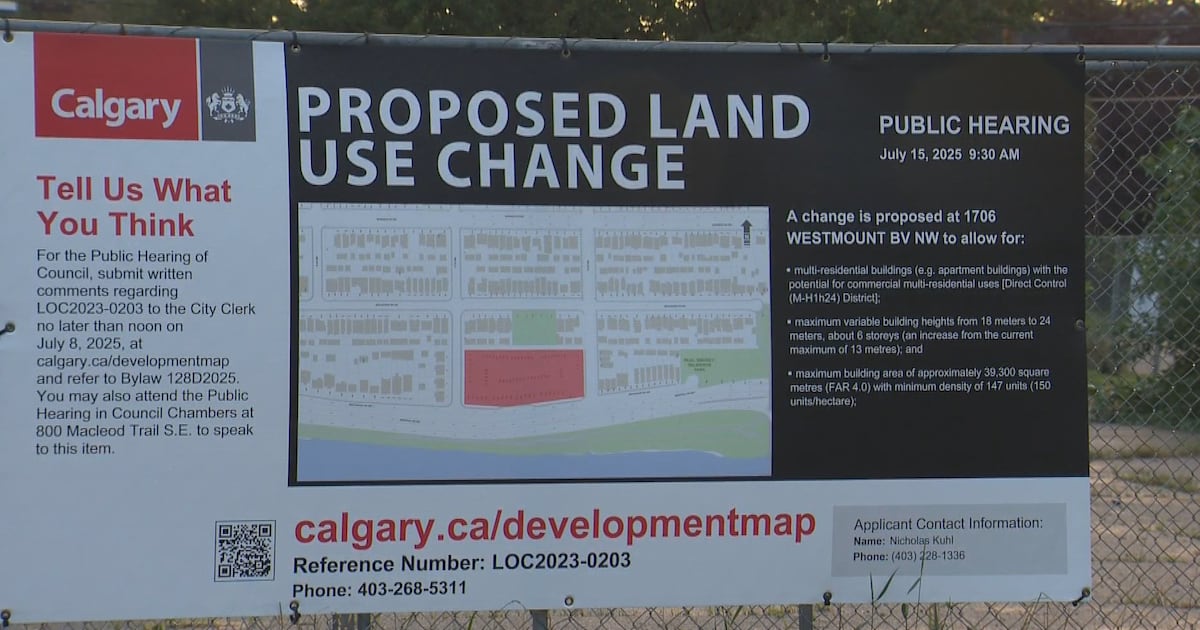Top Stories
Calgary Council Approves Rezoning of Former CBC Site Amid Controversy

Calgary City Council has unanimously approved the rezoning of the former CBC building site, a decision that has sparked significant community concern due to the presence of creosote, a toxic substance known to be harmful to both humans and the environment. The vote took place on Wednesday, paving the way for a new six-storey development on Westmount Boulevard N.W.
The site has a history of environmental issues stemming from its previous use by the Canada Creosote Company, which operated there until the 1960s. Creosote, a chemical used to treat wood, has contaminated the soil and, according to experts, has migrated beneath the Bow River. Professor Cathy Ryan from the University of Calgary noted, “It has, according to what the city has found, migrated to the other side of the river.”
Despite an environmental assessment deemed acceptable by the province, many residents of the Hillhurst community remain skeptical about the safety of the proposed construction. Public hearings revealed strong opposition from neighborhood advocates. Jim Stirling, a community advocate and engineer, expressed disappointment with the council’s decision, stating, “When you look at the process, it’s pretty clear the public were cut out of the interaction.”
The implications of rezoning extend beyond the immediate vicinity. Concerns about the public engagement process have surfaced, with residents questioning the transparency of the interactions between the city, the province, and the community regarding the creosote issue. Terry Wong, the Ward 7 councillor, emphasized the importance of proper engagement: “Engagement is tough, but we’ve got to do it right, and if we do it right, the confidence and trust of our corporation and the citizenship of our governance will be there.”
The developer, Anthem Properties, is responsible for any challenges that arise during the project. Rose-Mary Damiani, senior director for Anthem Properties, assured the community that “monitoring, reporting protocols will endure with the land,” aiming to provide confidence amid ongoing concerns.
Looking ahead, the next phase involves the development permit process, which will delve deeper into the potential community impacts. This stage is expected to allow for public input, although many, including Stirling, doubt that it will lead to significant changes in the proposal.
In related developments, cleanup efforts in the nearby Sunalta area are still in progress, but the provincial government has not announced plans for a comprehensive cleanup of the contaminated site. Meanwhile, the mayor has indicated that there are currently no new development plans under consideration.
Despite the controversies surrounding the site, the environmental assessment conducted in Hillhurst did not identify creosote levels high enough to pose an immediate concern. Nonetheless, the juxtaposition of potential development against community health and environmental safety continues to be a contentious issue for residents and city officials alike.
-

 World3 months ago
World3 months agoScientists Unearth Ancient Antarctic Ice to Unlock Climate Secrets
-

 Entertainment3 months ago
Entertainment3 months agoTrump and McCormick to Announce $70 Billion Energy Investments
-

 Lifestyle3 months ago
Lifestyle3 months agoTransLink Launches Food Truck Program to Boost Revenue in Vancouver
-

 Science3 months ago
Science3 months agoFour Astronauts Return to Earth After International Space Station Mission
-

 Technology2 months ago
Technology2 months agoApple Notes Enhances Functionality with Markdown Support in macOS 26
-

 Top Stories1 week ago
Top Stories1 week agoUrgent Update: Fatal Crash on Highway 99 Claims Life of Pitt Meadows Man
-

 Sports3 months ago
Sports3 months agoSearch Underway for Missing Hunter Amid Hokkaido Bear Emergency
-

 Politics2 months ago
Politics2 months agoUkrainian Tennis Star Elina Svitolina Faces Death Threats Online
-

 Technology3 months ago
Technology3 months agoFrosthaven Launches Early Access on July 31, 2025
-

 Politics3 months ago
Politics3 months agoCarney Engages First Nations Leaders at Development Law Summit
-

 Entertainment3 months ago
Entertainment3 months agoCalgary Theatre Troupe Revives Magic at Winnipeg Fringe Festival
-

 Politics1 week ago
Politics1 week agoShutdown Reflects Democratic Struggles Amid Economic Concerns




















